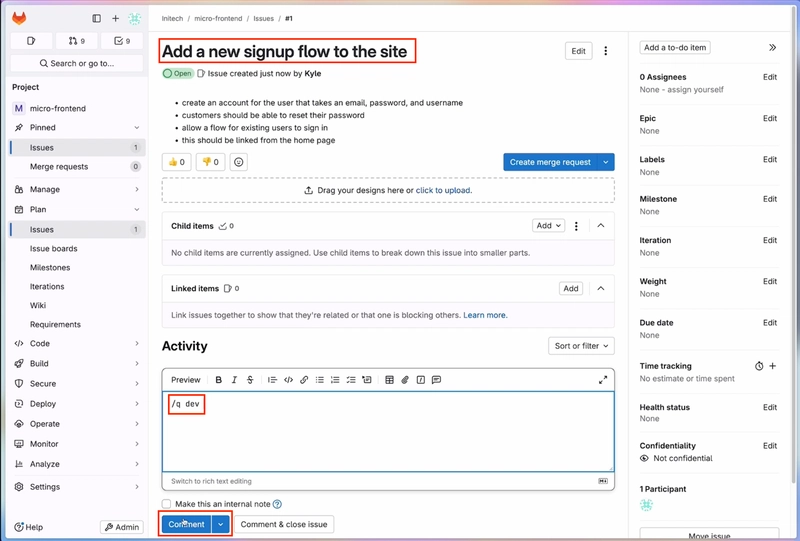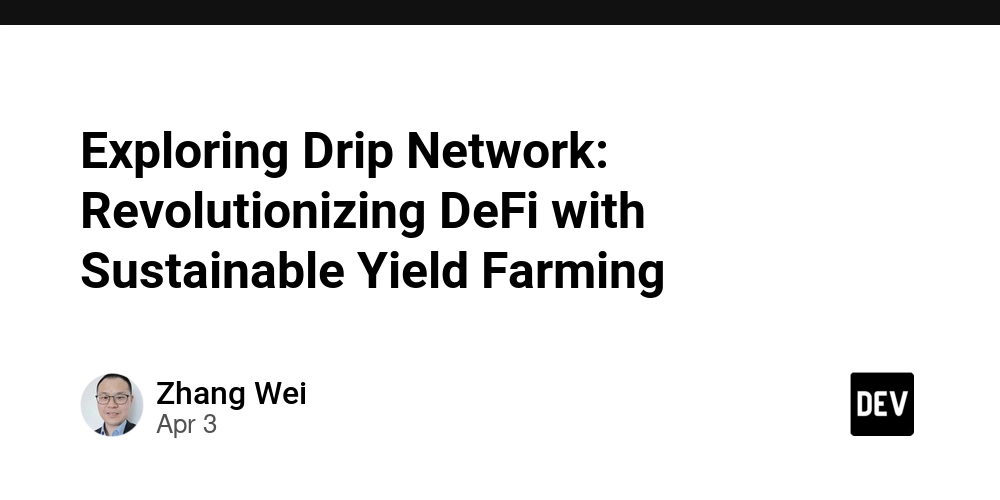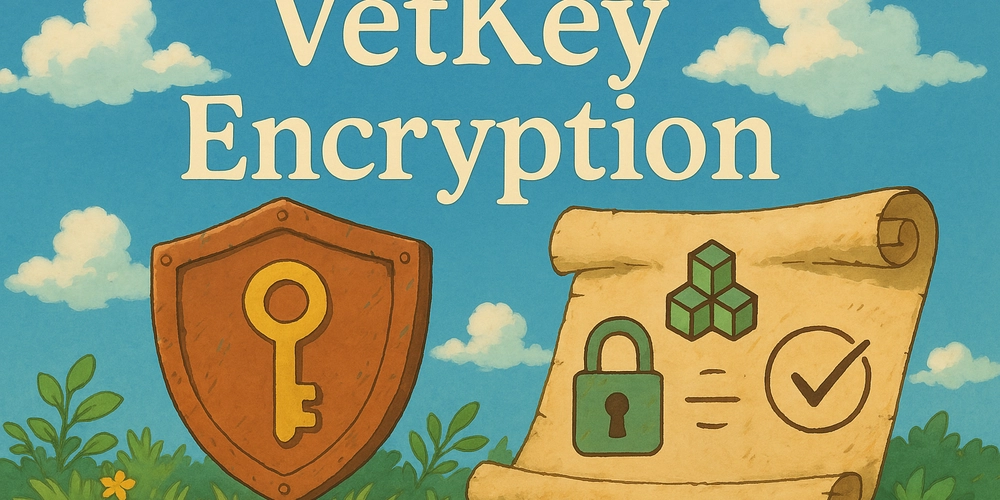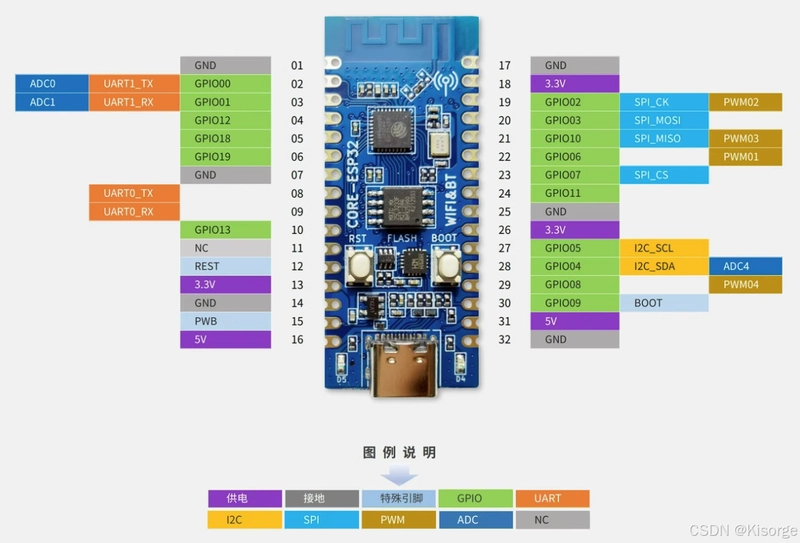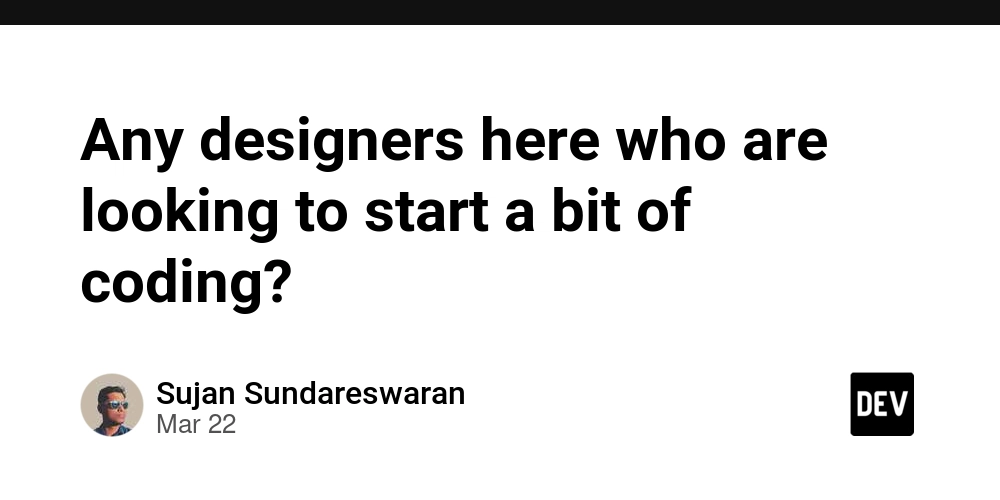Dependency Management in Go: Modules, Vendoring, and the End of NuGet
As a C# developer, you've likely grown accustomed to the convenience of NuGet—adding packages with a few clicks, letting Visual Studio manage references, and watching dependencies resolve themselves. When transitioning to Go, you'll encounter a fundamentally different approach to dependency management: one that prioritizes simplicity, reproducibility, and explicit control. This article explores Go's dependency management ecosystem, contrasting it with C#'s NuGet experience, and highlighting how Go modules represent a philosophical shift in how we think about external code. The Evolution of Dependency Management Before diving into technical details, it's worth understanding how both ecosystems evolved their dependency management approaches. C#'s Journey: From GAC to NuGet C# dependency management has evolved through several phases: Global Assembly Cache (GAC): DLL files installed system-wide Project references: Manual DLL references stored in project files NuGet packages: Central repository with versioning and dependency resolution PackageReference: Modern XML-based dependency declarations in .csproj files This evolution has been toward greater convenience and automation, with Visual Studio handling much of the complexity behind the scenes. Go's Path: From GOPATH to Modules Go's dependency management has followed a different trajectory: GOPATH: All code lived in a single workspace directory Community tools: External tools like dep, glide, and godep emerged Vendor directories: Manual vendoring of dependencies within projects Go modules: Official dependency system introduced in Go 1.11 Go's evolution has emphasized reproducibility and explicitness, sometimes at the expense of convenience. Go Modules: The Foundation Introduced in Go 1.11, Go modules provide a way to manage dependencies and versions directly from the command line, without the need for a separate package manager like NuGet. Getting Started with Go Modules Creating and managing Go modules is straightforward: Initialize a module: This creates a go.mod file, which records the module's path and dependencies. go mod init example.com/myproject Add dependencies: When you import a package in your code, Go automatically fetches it and updates the go.mod file. import "github.com/pkg/errors" Tidy up dependencies: This command cleans up the go.mod and go.sum files by removing unused dependencies and adding any missing ones. go mod tidy Understanding go.mod and go.sum Files go.mod: This file lists the module's dependencies and their versions. It's akin to a .csproj file in .NET, specifying which packages your project relies on. module example.com/myproject go 1.18 require ( github.com/pkg/errors v0.9.1 golang.org/x/net v0.0.0-20220411215724-3cde53f8b6fb ) go.sum: This file ensures the integrity of dependencies by recording their checksums. It's similar to the packages.lock.json file in .NET, ensuring that your dependencies haven't changed unexpectedly. github.com/pkg/errors v0.9.1 h1:... github.com/pkg/errors v0.9.1/go.mod h1:... Basic Go Module Workflow A typical workflow with Go modules looks like this: Create a go.mod file in your project root: go mod init example.com/myproject Import a package in your Go code: package main import ( "fmt" "github.com/google/uuid" ) func main() { id := uuid.New() fmt.Printf("Generated UUID: %s\n", id.String()) } Build or run your code. Go will automatically download and manage the required dependencies: go run main.go This command will download the github.com/google/uuid package and its dependencies, updating the go.mod and go.sum files. Comparing Go Modules and NuGet Package Management: Centralized vs. Distributed NuGet: Centralized and Structured NuGet operates around a centralized package repository and structured metadata: Key characteristics of NuGet include: Central repository: nuget.org hosts most packages Rich metadata: Packages include detailed information about authors, licenses, etc. Version constraints: Support for exact, minimum, and range specifications Transitive dependencies: Automatically resolved and installed Package restore: Dependencies downloaded on build or explicitly via dotnet restore Go Modules: Distributed and Minimal Go modules take a more distributed, URL-based approach: // go.mod file module github.com/yourname/yourproject go 1.19 require ( github.com/google/uuid v1.3.0 golang.org/x/text v0.3.7 ) Key characteristics of Go modules include: Distributed repositories: Packages come directly from version control systems Minimal metadata: Limited to module path, version, and dependencies Semantic versioning: Strong emphasis on semver compatibility Explicit versioning: Direct control ov
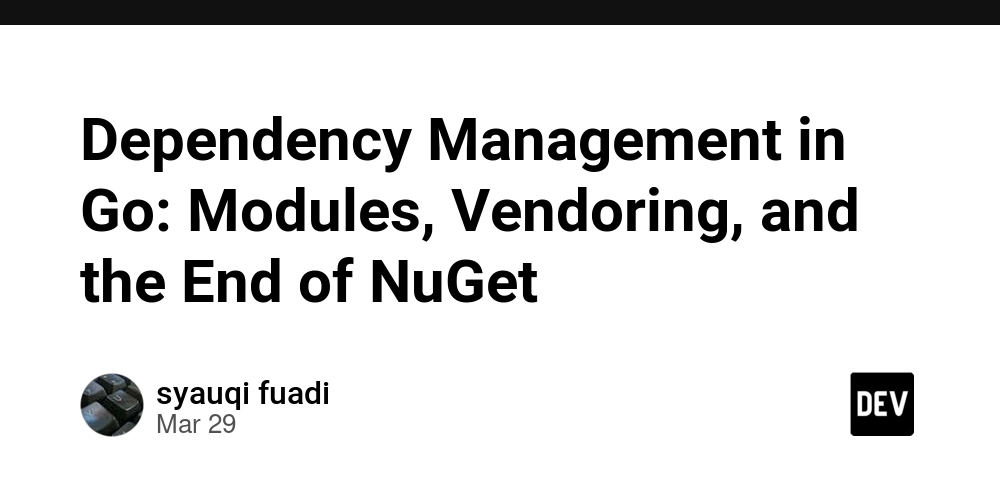
As a C# developer, you've likely grown accustomed to the convenience of NuGet—adding packages with a few clicks, letting Visual Studio manage references, and watching dependencies resolve themselves. When transitioning to Go, you'll encounter a fundamentally different approach to dependency management: one that prioritizes simplicity, reproducibility, and explicit control.
This article explores Go's dependency management ecosystem, contrasting it with C#'s NuGet experience, and highlighting how Go modules represent a philosophical shift in how we think about external code.
The Evolution of Dependency Management
Before diving into technical details, it's worth understanding how both ecosystems evolved their dependency management approaches.
C#'s Journey: From GAC to NuGet
C# dependency management has evolved through several phases:
- Global Assembly Cache (GAC): DLL files installed system-wide
- Project references: Manual DLL references stored in project files
- NuGet packages: Central repository with versioning and dependency resolution
- PackageReference: Modern XML-based dependency declarations in .csproj files
This evolution has been toward greater convenience and automation, with Visual Studio handling much of the complexity behind the scenes.
Go's Path: From GOPATH to Modules
Go's dependency management has followed a different trajectory:
- GOPATH: All code lived in a single workspace directory
- Community tools: External tools like dep, glide, and godep emerged
- Vendor directories: Manual vendoring of dependencies within projects
- Go modules: Official dependency system introduced in Go 1.11
Go's evolution has emphasized reproducibility and explicitness, sometimes at the expense of convenience.
Go Modules: The Foundation
Introduced in Go 1.11, Go modules provide a way to manage dependencies and versions directly from the command line, without the need for a separate package manager like NuGet.
Getting Started with Go Modules
Creating and managing Go modules is straightforward:
-
Initialize a module: This creates a
go.modfile, which records the module's path and dependencies.
go mod init example.com/myproject
-
Add dependencies: When you import a package in your code, Go automatically fetches it and updates the
go.modfile.
import "github.com/pkg/errors"
-
Tidy up dependencies: This command cleans up the
go.modandgo.sumfiles by removing unused dependencies and adding any missing ones.
go mod tidy
Understanding go.mod and go.sum Files
-
go.mod: This file lists the module's dependencies and their versions. It's akin to a.csprojfile in .NET, specifying which packages your project relies on.
module example.com/myproject
go 1.18
require (
github.com/pkg/errors v0.9.1
golang.org/x/net v0.0.0-20220411215724-3cde53f8b6fb
)
-
go.sum: This file ensures the integrity of dependencies by recording their checksums. It's similar to thepackages.lock.jsonfile in .NET, ensuring that your dependencies haven't changed unexpectedly.
github.com/pkg/errors v0.9.1 h1:...
github.com/pkg/errors v0.9.1/go.mod h1:...
Basic Go Module Workflow
A typical workflow with Go modules looks like this:
- Create a
go.modfile in your project root:
go mod init example.com/myproject
- Import a package in your Go code:
package main
import (
"fmt"
"github.com/google/uuid"
)
func main() {
id := uuid.New()
fmt.Printf("Generated UUID: %s\n", id.String())
}
- Build or run your code. Go will automatically download and manage the required dependencies:
go run main.go
This command will download the github.com/google/uuid package and its dependencies, updating the go.mod and go.sum files.
Comparing Go Modules and NuGet
Package Management: Centralized vs. Distributed
NuGet: Centralized and Structured
NuGet operates around a centralized package repository and structured metadata:
Include="Newtonsoft.Json" Version="13.0.1" />
Include="Microsoft.Extensions.Logging" Version="6.0.0" />
Key characteristics of NuGet include:
- Central repository: nuget.org hosts most packages
- Rich metadata: Packages include detailed information about authors, licenses, etc.
- Version constraints: Support for exact, minimum, and range specifications
- Transitive dependencies: Automatically resolved and installed
-
Package restore: Dependencies downloaded on build or explicitly via
dotnet restore
Go Modules: Distributed and Minimal
Go modules take a more distributed, URL-based approach:
// go.mod file
module github.com/yourname/yourproject
go 1.19
require (
github.com/google/uuid v1.3.0
golang.org/x/text v0.3.7
)
Key characteristics of Go modules include:
- Distributed repositories: Packages come directly from version control systems
- Minimal metadata: Limited to module path, version, and dependencies
- Semantic versioning: Strong emphasis on semver compatibility
- Explicit versioning: Direct control over module versions
- go.sum file: Cryptographic checksums ensure dependency integrity
Project Structure Comparison
C# Project Structure
A typical C# project with dependencies includes:
MyProject/
├── MyProject.csproj # Contains PackageReference elements
├── Program.cs
└── obj/
└── project.assets.json # Detailed dependency graph
Dependencies are stored in a central location:
~/.nuget/packages/ # Global package cache
Go Project Structure
A Go project with modules includes:
myproject/
├── go.mod # Module definition and direct dependencies
├── go.sum # Checksums for all dependencies (direct and indirect)
├── main.go
└── vendor/ # Optional vendored dependencies
└── modules.txt
└── github.com/
└── google/
└── uuid/ # Vendored package code
Dependencies are cached globally but can also be vendored locally:
~/go/pkg/mod/ # Global module cache
./vendor/ # Optional local vendored dependencies
Dependency Resolution: Different Philosophies
NuGet's Approach
NuGet uses a dependency graph solver to find compatible versions:
// ProjectA depends on PackageX 1.0
// ProjectB depends on PackageX 2.0
// Solution references both ProjectA and ProjectB
// NuGet will try to find a version of PackageX that satisfies both,
// or may include both versions with assembly binding redirects
This leads to:
- Automatic conflict resolution: NuGet tries to find compatible versions
- Assembly binding redirects: Runtime redirects for version conflicts
- Complex dependency graphs: Deep hierarchies of dependencies
Go's Approach
Go modules use minimal version selection (MVS):
// Package A requires github.com/example/pkg v1.0.0
// Package B requires github.com/example/pkg v1.2.0
// Your project imports both A and B
// Go will use v1.2.0 (the highest minimum version)
This results in:
- Deterministic builds: Same dependencies every time
- No version conflicts: Highest minimum version wins
- Explicit dependency graph: Clear view of what's being used
Version Management: Constraints vs. Minimums
NuGet Version Constraints
NuGet supports flexible version constraints:
Include="Newtonsoft.Json" Version="13.0.1" />
Include="Microsoft.AspNetCore.App" Version="[2.2.0,3.0.0)" />
This flexibility comes with complexity:
- Version ranges: Can specify minimum, maximum, or ranges
- Floating versions: Can update within constraints
- Complex resolution: May lead to different packages on different machines
Go's Semantic Versioning
Go enforces a strict semantic versioning approach:
require github.com/example/package v1.2.3 // Exact version
Key aspects include:
- Exact versions: Specified precisely in go.mod
- Minimal version selection: Uses highest version that satisfies all requirements
- Major version compatibility: v2+ treated as different packages (e.g., github.com/example/package/v2)
To update dependencies, you use explicit commands:
go get -u # Update all dependencies
go get -u github.com/example/package # Update specific dependency
go get github.com/example/package@v1.3.0 # Pin to specific version
Comprehensive Comparison
| Feature | NuGet | Go Modules |
|---|---|---|
| Repository Model | Centralized (nuget.org) | Decentralized (Git repositories) |
| Package Identification | Package name and version | Import path and version |
| Dependency Resolution | Complex solver with conflict resolution | Minimal version selection (MVS) |
| Versioning | Flexible ranges, constraints | Strict semantic versioning |
| Package Storage | Global cache (~/.nuget/packages) | Global cache (~/go/pkg/mod) |
| Reproducibility | packages.lock.json | go.sum and vendoring |
| Security | Package signing | Checksums in go.sum |
| Private Packages | Private NuGet servers | Git credentials, GOPRIVATE |
| Tooling | Visual Studio integration, CLI | Command-line focused |
| Metadata | Rich (authors, licenses, etc.) | Minimal (import path, version) |
| Build Integration | Automatic package restore | Explicit dependency management |
Vendoring: Ensuring Reproducibility
Vendoring is a mechanism in Go that allows you to include all your project's dependencies within a vendor directory. This ensures that your project is self-contained and can be built without fetching dependencies from external sources.
Using Vendoring in Go
To vendor dependencies, you can use the following command:
go mod vendor
This command copies all dependencies into a vendor directory, making your project fully portable and independent of external repositories.
When to Use Vendoring
- Reproducibility: Vendoring ensures that your project builds consistently, regardless of changes in remote repositories.
- Offline builds: With vendored dependencies, you can build your project without internet access.
- Compliance and auditing: Some organizations require all dependencies to be reviewed and stored locally for security reasons.
- CI/CD pipelines: Vendoring can make builds more reliable in CI/CD environments.
C# Vendoring (Less Common)
C# rarely uses vendoring, but it's possible:
Include="ThirdPartyLib">
This approach:
- Is uncommon: Most projects use NuGet packages
- Lacks metadata: No automatic tracking of versions
- Requires manual updates: No tooling for vendored dependency updates
Private Dependencies: Enterprise Considerations
Both ecosystems support private dependencies, but with different approaches.
C# Private Packages
C# supports private package sources:
key="nuget.org" value="https://api.nuget.org/v3/index.json" />
key="Company Feed" value="https://pkgs.dev.azure.com/company/_packaging/feed/nuget/v3/index.json" />
Private packages typically require:
- Private NuGet servers: Azure Artifacts, GitHub Packages, etc.
- Authentication: API keys or credentials for package sources
- Feed configuration: nuget.config files to specify sources
Go Private Modules
Go supports private repositories through several mechanisms:
# Configure Git for private GitHub repositories
go env -w GOPRIVATE=github.com/mycompany/*
# Or use a proxy server
go env -w GOPROXY=https://proxy.company.com,direct
Private modules typically require:
- Git configuration: SSH keys or credentials for Git access
- GOPRIVATE environment variable: Tells Go which modules are private
- Optional proxy servers: For caching or access control
CI/CD Implications
When setting up CI/CD pipelines, you'll need to adapt your approach:
For C# with NuGet:
- Configure package sources with authentication
- Set up package caching to improve build speed
- Consider using lock files for reproducibility
For Go with Modules:
- Configure Git credentials for private repositories
- Consider vendoring dependencies
- Set up module caching to improve build speed
- Configure GOPRIVATE and GOPROXY environment variables
Practical Comparison: Common Tasks
Let's compare how common dependency management tasks are performed in each ecosystem.
Adding a New Dependency
C#:
dotnet add package Newtonsoft.Json
Go:
# Import the package in your code
import "github.com/google/uuid"
# Then run
go mod tidy
Updating Dependencies
C#:
dotnet add package Newtonsoft.Json --version 13.0.2
Go:
go get -u github.com/google/uuid
go mod tidy
Listing Dependencies
C#:
dotnet list package
Go:
go list -m all
Removing Unused Dependencies
C#:
dotnet remove package Newtonsoft.Json
Go:
# Remove import from code, then
go mod tidy
Real-World Example: Migrating from C# to Go
Let's consider a practical example of migrating a simple API service from C# to Go, focusing on dependency management.
C# API Service
// MyService.csproj
<Project Sdk="Microsoft.NET.Sdk.Web">
<PropertyGroup>
<TargetFramework>net6.0TargetFramework>
PropertyGroup>
<ItemGroup>
<PackageReference Include="Microsoft.AspNetCore.App" />
<PackageReference Include="Newtonsoft.Json" Version="13.0.1" />
<PackageReference Include="Serilog.AspNetCore" Version="6.0.1" />
<PackageReference Include="Microsoft.EntityFrameworkCore.SqlServer" Version="6.0.7" />
ItemGroup>
Project>
Equivalent Go API Service
// go.mod
module github.com/mycompany/myservice
go 1.19
require (
github.com/gin-gonic/gin v1.8.1
github.com/go-sql-driver/mysql v1.6.0
github.com/google/uuid v1.3.0
go.uber.org/zap v1.23.0
)
Dependency Resolution Comparison
When building these projects:
C# Resolution Process:
- Read package references from .csproj
- Check local package cache (~/.nuget/packages)
- Download missing packages from NuGet
- Build dependency graph with version conflict resolution
- Generate assembly binding redirects if needed
- Compile against referenced assemblies
Go Resolution Process:
- Read direct dependencies from go.mod
- Check local module cache (~/go/pkg/mod)
- Download missing modules directly from source repositories
- Apply minimal version selection to determine final versions
- Update go.sum with cryptographic checksums
- Compile against selected module versions
Adapting Your Workflow: Tips for C# Developers
For C# developers transitioning to Go, here are some practical tips:
1. Embrace Explicit Dependencies
In C#, you might add packages for convenience. In Go, be deliberate:
- Prefer standard library: Go's standard library is comprehensive
- Minimize dependencies: Each dependency adds complexity
- Evaluate carefully: Consider maintenance, size, and compatibility
2. Learn the Module Commands
Essential Go module commands:
-
go mod init: Initialize a new module -
go mod tidy: Add missing and remove unused modules -
go get: Add or update dependencies -
go list -m all: List all dependencies -
go mod vendor: Create vendor directory -
go mod why: Explain why a module is needed
3. Understand Semantic Import Versioning
Go's approach to major versions is unique:
- v0.x.x: Unstable API, may change
- v1.x.x: Stable API, backward compatible
- v2+: Imported with path suffix (/v2, /v3, etc.)
import "github.com/example/package/v2"
4. Set Up Private Module Access
For private repositories:
# For GitHub private repos
go env -w GOPRIVATE=github.com/mycompany/*
# For custom GitLab
go env -w GOPRIVATE=gitlab.mycompany.com/*
5. Consider CI/CD Implications
Adapt your CI/CD pipelines:
- Module authentication: Configure Git credentials
- Build caching: Cache the Go module cache
- Vendoring decision: Decide whether to commit vendor directory
Pros and Cons: Making the Transition
Advantages of Go's Approach
- Reproducible builds: Exact versions are recorded
- Simplified dependency graph: Minimal version selection reduces complexity
- Direct source access: No central repository as a single point of failure
- Transparent dependencies: Clear visibility into what's being imported
- Built-in vendoring: First-class support for vendored dependencies
Challenges When Coming from C#
- Less metadata: Limited information about authors, licenses, etc.
- Manual imports: No UI for browsing and adding packages
- Different versioning model: Major versions as import paths takes adjustment
- Distributed nature: No central package repository to search
- Less tooling integration: Fewer IDE features for dependency management
Conclusion: A Different Philosophy
Go's dependency management represents a fundamentally different philosophy from C#'s NuGet ecosystem. While NuGet prioritizes convenience and automation, Go modules emphasize explicitness, reproducibility, and simplicity.
For C# developers, the transition may initially feel like a step backward in terms of convenience. However, as you adapt to Go's approach, you'll likely appreciate the predictability and transparency it brings to your projects.
The key is to understand that these differences aren't accidental—they reflect Go's core values of simplicity, explicitness, and practicality. By embracing these values, you'll not only become more effective with Go but might even bring some of these principles back to your C# projects.
Next up: "Why Go's Tooling Feels Alien (but Powerful) to C# Developers" - exploring how Go's CLI-centric approach differs from Visual Studio's integrated experience.










